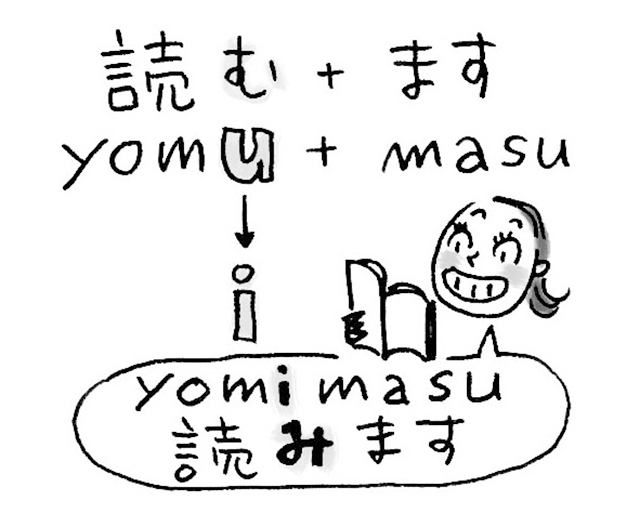Japanese Verbs Follow Systematic Rules

All Japanese verbs end with “u” when expressed using Roman letters. For example, all of the verbs “yomu (read),” “kaku (write),” “kiku (listen)” and “hanasu (speak)” end with “u.” This is very easy to learn, but we hardly use these “dictionary form” verbs in daily conversation. Many foreigners speak Japanese using the “desu/masu” form, which also conjugates systematically.
As “yomu” conjugates into “yomi masu,” in order to make pronunciation smooth, “u” is replaced with “i.” This occurs in the same manner with other verbs like “kaku,” “kiku,” “hanasu.” There is also another type such as “miru,” “neru” and “taberu” where “ru” is omitted and “masu” is added, i.e: “mi masu,” “ne masu” and “tabe masu.”
“Kuru” and “suru” are exceptions. As for “kuru,” “ru” is omitted and “ku” changes to “ki.” Then “masu” is added, i.e: “ki masu.” As for “suru,” “ru” is omitted and “su” changes to “si” or “shi.” Then “masu” is added, i.e: “si (shi) masu.” Fundamentally, the verbs generally conjugate in the same way using the above-mentioned rule.
It is easy to construct these sentences in the past tense because you just say “mashita” instead of “masu.” As an example, “yomi mashita” is formed from “yomi masu.” In a negative sentence “masu” becomes “masen” and “yomi masu” becomes “yomi masen.” As you see, the “desu/masu” form conjugates systematically. Besides the “desu/masu” form, you just add “ta” to create a sentence in the past tense and “nai” to create a negative sentence. However, “Iku”becomes “itta” instead of “ikuta” and “iku nai” becomes “ika nai” to aid smooth pronunciation. In principle, conjugation also follows a regular pattern.
